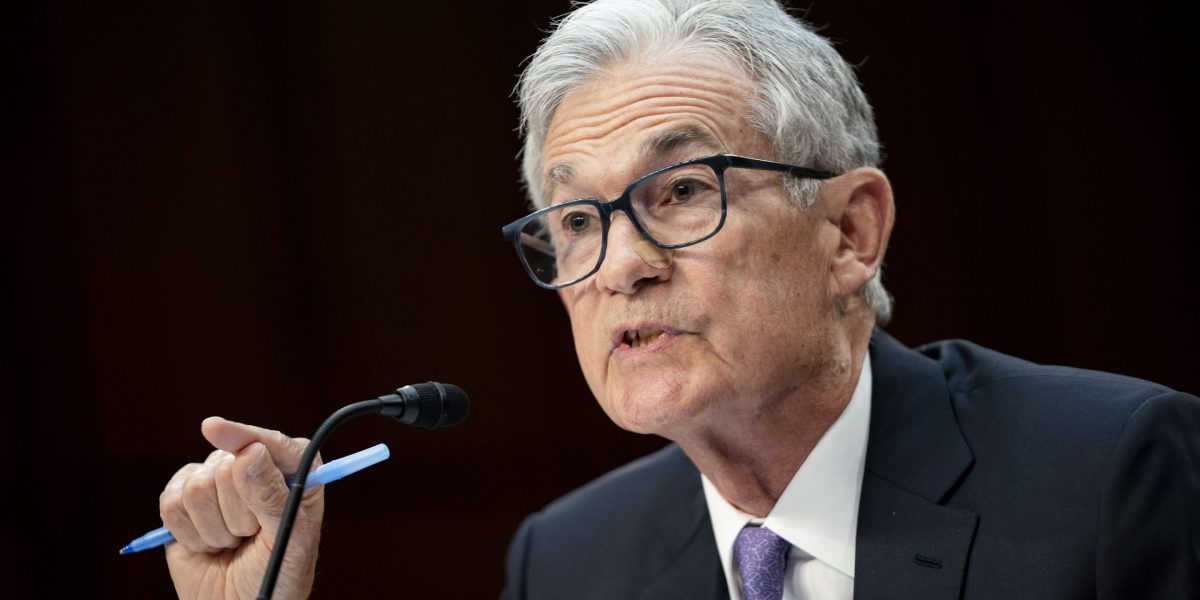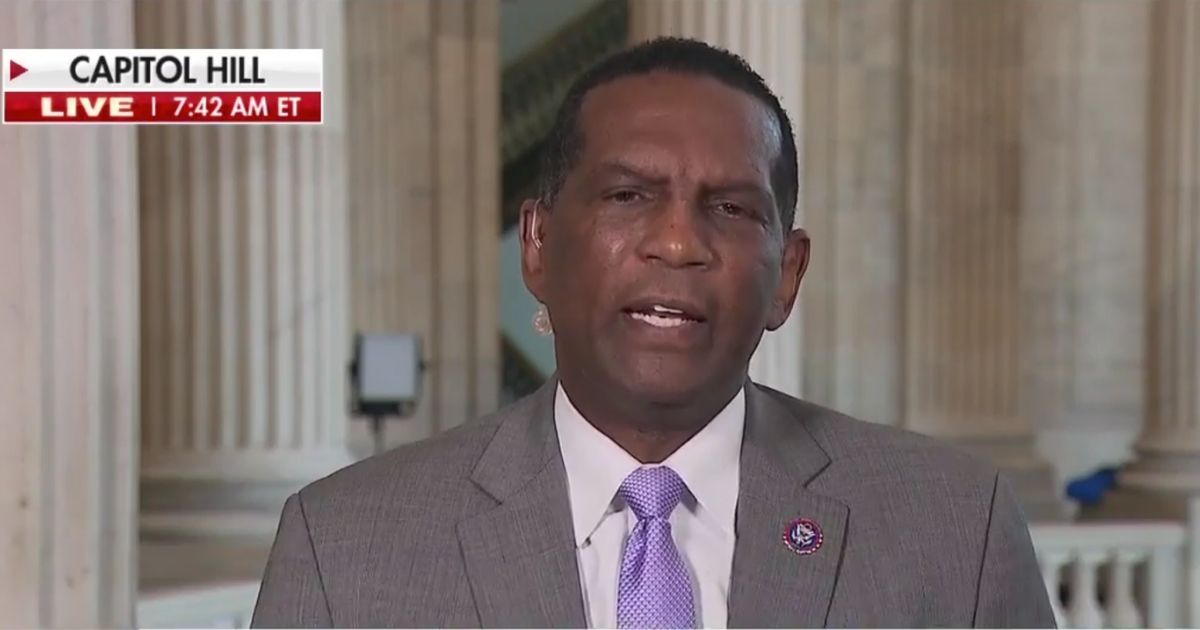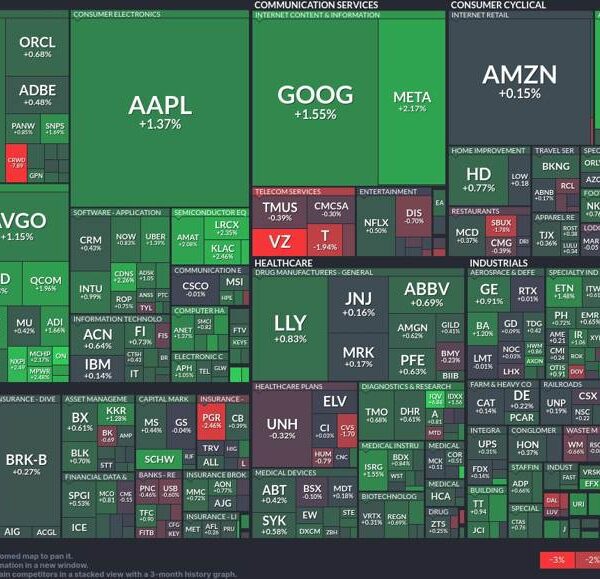

Federal Reserve officials are on the verge of lowering borrowing costs within months, a move Chair Jerome Powell may signal in the coming week as the risks grow of imperiling a solid but moderating job market.
US central bankers, who’ve kept interest rates at a more than two-decade high for a full year, are widely expected to leave them there again when their two-day meeting ends on Wednesday. Instead, investors see Fed officials lowering their benchmark rate in September.
Recent data have been promising, with milder price increases alongside robust economic growth, but the Fed wants a bit more assurance that inflation will continue to fall toward their 2% target.
The downdraft in price pressures, paired with an upward creep in the unemployment rate, has brought the Fed’s two goals — maximum employment and stable prices — more into balance. Officials want to tame inflation, but they also don’t want to cause undue harm to the labor market by holding rates high for too long.
That puts the closely-watched month jobs report on Friday even more in the spotlight, along with other readouts due on the labor market.
The July employment report is likely to show a continued softening in the pace of hiring amid a still-limited number of layoffs. Nonfarm payrolls are forecast to advance by 178,000 — a healthy but more moderate pace. The unemployment rate, which has climbed in each of the past three months, is seen holding at 4.1%.
Hurricane Beryl, the storm that struck Texas earlier this month, presents a wild card and could restrain hours worked. Fresh figures out Tuesday on job openings and quitting will also be scrutinized.
The Conference Board’s consumer confidence index, out Tuesday, will offer insight into the state of consumers, and investors will get an update on the beleaguered manufacturing sector with the Institute for Supply Management’s factory report on Thursday.
“Most Fed officials will likely agree on one thing when they convene for their July 30-31 meeting: downside risks to the US central bank’s full employment mandate are about balanced with upside risks to inflation. We expect broad agreement on that a rate cut will be appropriate sometime ‘soon,’ but there likely will be minor differences about the timing.” — Anna Wong, Stuart Paul, Eliza Winger, Estelle Ou and Chris G. Collins, economists
Further north, Statistics Canada is set to release gross domestic product data for May, which economists expect will show a modest 0.2% monthly bump. The agency will also issue a preliminary estimate for June, shedding light on whether the economy is on track to match the Bank of Canada’s estimate of 1.5% annualized growth in the second quarter.
Elsewhere, rate decisions in Japan and the UK will be closely watched — the former for a hike, the latter for a cut. GDP data in the euro area will give a snapshot of the state of the economy in the region and its top economies in the second quarter. Combined with inflation data for July, that will provide clues on whether the European Central Bank will be able to lower borrowing costs again in September.
Asia
The Bank of Japan is poised to be the highlight of the week in Asia with a policy meeting on Wednesday that’s guaranteed to break news.
Authorities have already said they’ll release details of plans to cut monthly bond purchases in a first step toward quantitative tightening, with the consensus looking for a reduction to 5 trillion yen ($32.72 billion) from 6 trillion yen, and an eventual halving of purchases over two years. Most economists also see the risk of a rate hike, although only about 30% have that as a base case scenario.
Also on the policy front, Pakistan’s central bank is expected to cut its benchmark rate to 19.5% this week.
In data, Australia gets June consumer inflation data on Wednesday after price growth there surged more than expected in May. Another set of hot readings could nudge the Reserve Bank of Australia toward a rate hike when the board gathers the following week.
On the same day, China gets its official purchasing managers’ index for July, figures whose importance have largely been superseded by surprise cuts to policy rates.
Elsewhere, South Korea gets consumer price data that may show inflation picked up a tad in July, breaking a string of three straight decelerations and giving the central bank incentive to postpone a policy pivot. Vietnam gets a CPI report, along with trade stats.
Trade data are also due in Australia, Thailand, South Korea, Sri Lanka, Pakistan and Kazakhstan, while industrial output numbers will be released in Japan and South Korea.
Europe, Middle East, Africa
The Bank of England may lower rates for the first time in over four years on Thursday, with traders seeing the vote as a close call.
Investors are betting on a 50% chance of the UK central bank reducing rates from a 16-year high of 5.25% despite lingering signs of domestic price pressures. Economists expect the BOE to echo other central banks by signaling a gradual loosening of monetary policy once it begins cutting rates.
The BOE will present new inflation and growth forecasts alongside the decision that economists predict could be a tight, five-to-four vote for a cut.
Before that, Chancellor Rachel Reeves will paint a dire picture of the UK’s public finances in a speech on Monday. She’s set to tell the House of Commons that the country is “broke and broken,” with crises or chaos in housing, health, water, education, defense, transport and migration.
In euro area, the main focus is on GDP and inflation readings. Tuesday’s output data are expected to show a slowdown in the 20-member bloc, with growth seen at 0.2% in the second quarter, down from 0.3% at the start of the year. Momentum in Germany, Italy and Spain probably also slowed.
The following day, numbers for July will likely reveal that inflation held at 2.5%, while the core gauge — which strips out volatile elements such as energy and food — probably edged down to 2.8%.
Not a single ECB rate setter is scheduled to speak in the coming week, which will allow markets to draw their own conclusions.
Czech GDP is set to show stronger growth, good news for the central bank, which is predicted to lower borrowing costs again in the coming week. Hungarian GDP and Swiss inflation readings are also due.
Data from Saudi Arabia is expected to show the overall economy contracted for a fourth straight period in the second quarter following the kingdom’s decision to cut oil production last year. Even so, the government is focused mainly on non-oil growth as it looks to transform the economy and, after slowing in the first quarter, officials will hope it accelerated between April and June.
Turning to Africa, Mozambique’s central bank on Wednesday is set to become the first in Africa to cut rates for a fourth straight time this year as inflation remains contained at about 3%.
Latin America
Mexican flash output data due Tuesday are likely to show Latin America’s No. 2 economy sustained positive momentum in the second quarter. Growth is likely to trail central bank forecasts and headwinds going forward abound, though.
Four of the region’s bigger economies publish June unemployment reports in the coming week. The labor markets in Brazil and Mexico are at historically tight levels, while those in Chile and Colombia still betray considerable slack. Worth noting: Brazil’s labor market data obscure a high degree of informality.
Brazil also reports June industrial output, while Colombia’s central bank releases its quarterly monetary policy report.
A very light week in Peru does offer up Lima’s July consumer price data. The central bank is on hold given elevated core readings.
Three central banks deliver rate decisions this week. Chile’s recent inflation uptick has policymakers’ attention, though most analysts see Governor Rosanna Costa delivering a ninth straight cut, to 5.5%.
Colombia’s BanRep appears locked in on a 50 basis-point cut, to 10.75%, disappointing the board’s doves along with President Gustavo Petro and Finance Minister Ricardo Bonilla.
In Brazil, inflation prints and expectations are both on the rise, leaving policymakers led by Roberto Campos Neto with scant room for maneuver. Look for a second straight pause at 10.5%.















